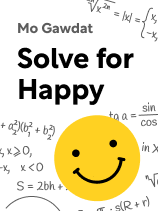

This article is an excerpt from the Shortform book guide to "Solve for Happy" by Mo Gawdat. Shortform has the world's best summaries and analyses of books you should be reading.
Like this article? Sign up for a free trial here.
What does your inner voice tell you? Should you listen to it?
That little voice in your head, Mo Gawdat says, might be getting between you and happiness. If you think your inner voice is equivalent to you, suffering will be your companion. But, you can free yourself from this misconception and find more joy.
Continue reading to learn how to listen to your inner voice and respond to it appropriately.
Listening to Your Inner Voice
You likely have a voice in your head that questions your decisions, complains about your circumstances, and judges those around you. Because it’s your constant companion, you’re inclined to identify with this voice. However, that little voice in your head, Mo Gawdat says, is not you. So, you should be careful when listening to your inner voice and responding to it.
To make this argument, he first observes that, to perceive something, we must be outside of it. For example, to perceive the Empire State building, we can’t be inside it. So, because we can perceive the voice in our head, we must be outside of that voice; it can’t be equivalent to us.
| Distance Yourself From Your Thoughts In The Happiness Trap, Russ Harris similarly suggests that our thoughts are simply stories our brain tells us to help us survive—they aren’t identical to us. Accordingly, he recommends “defusion,” where we distance ourselves from our thoughts by simply observing them as a bystander. One defusion technique is distancing, where we rephrase our thoughts by prefacing them with “my brain is thinking that…” This helps us recognize that we aren’t identical to our thoughts. Harris even recommends imagining a cartoon narrating your thoughts, which makes it easier to dissociate from them. According to Harris, defusion helps us recognize that: • Our thoughts don’t necessarily reflect reality and are often incorrect. • Our thoughts exist to serve us, not the other way around. • Negative thoughts don’t constitute a threat, since they’re just voices in your head. |
Instead, Gawdat asserts that this inner voice is our brain talking. Because it evolved to ensure our survival, the brain overemphasizes threats and replays them incessantly. For instance, it might replay an awkward conversation you had earlier, causing embarrassment and regret. By needlessly replaying these memories, your brain prevents you from being happy.
(Shortform note: Gawdat’s suggestion that your inner voice is your brain, rather than your actual self, implies that you’re more than just your brain. However, some philosophers take umbrage with this claim. Derek Parfit, for example, has argued that we’re identical to our brains because neuroscience suggests that our brain thinks, and we’re identical to the bearer of our thoughts.)
However, Gawdat argues that you can control your brain and end the suffering that listening to your inner voice causes. To do so, he recommends four steps:
1. Listen to your inner voice, remembering that your thoughts are distinct from you.
2. Focus on your negative thoughts. Trace these thoughts to their cause, and you’ll often see that they’re ill-founded.
3. Replace these negative thoughts with positive thoughts, ideally about the same topic. For example, instead of thinking about how much you hate the morning, think about how much you enjoy morning coffee.
(Shortform note: Experts also suggest arguing with your inner voice to exert your control. For instance, if this voice says, “You’re incompetent at your job,” you might remind it of times when you’ve succeeded and received praise from your boss. This strategy uses Gawdat’s first three steps: Listen to your inner voice and identify the negative thoughts, then use positive thoughts to argue against the negative ones.)
4. When you need a break from thinking about a certain subject, observe your surroundings. Because your brain can’t multitask, observing your surroundings prevents further thoughts on the same subject from infiltrating your brain.
(Shortform note: Although Gawdat claims that our brains can’t multitask, other experts qualify that claim, arguing only that our brains can’t multitask effectively. Consequently, observing your surroundings isn’t a foolproof plan for avoiding thought. Rather, experts recommend multiple steps to stop thinking, like meditating and introspecting about the experiences in your body.)

———End of Preview———
Like what you just read? Read the rest of the world's best book summary and analysis of Mo Gawdat's "Solve for Happy" at Shortform.
Here's what you'll find in our full Solve for Happy summary:
- The six misconceptions that cause us to suffer
- How to remove the seven weaknesses that hinder your happiness
- The five pillars to becoming permanently happy






